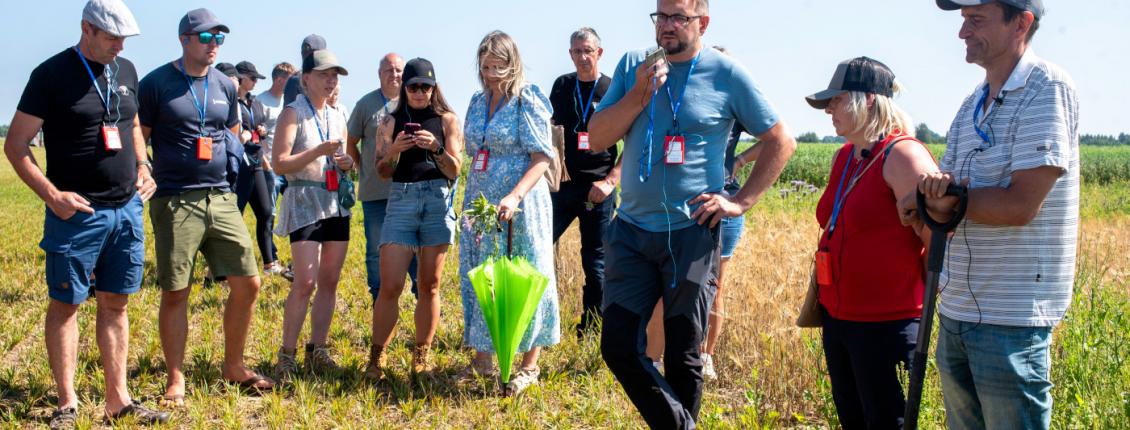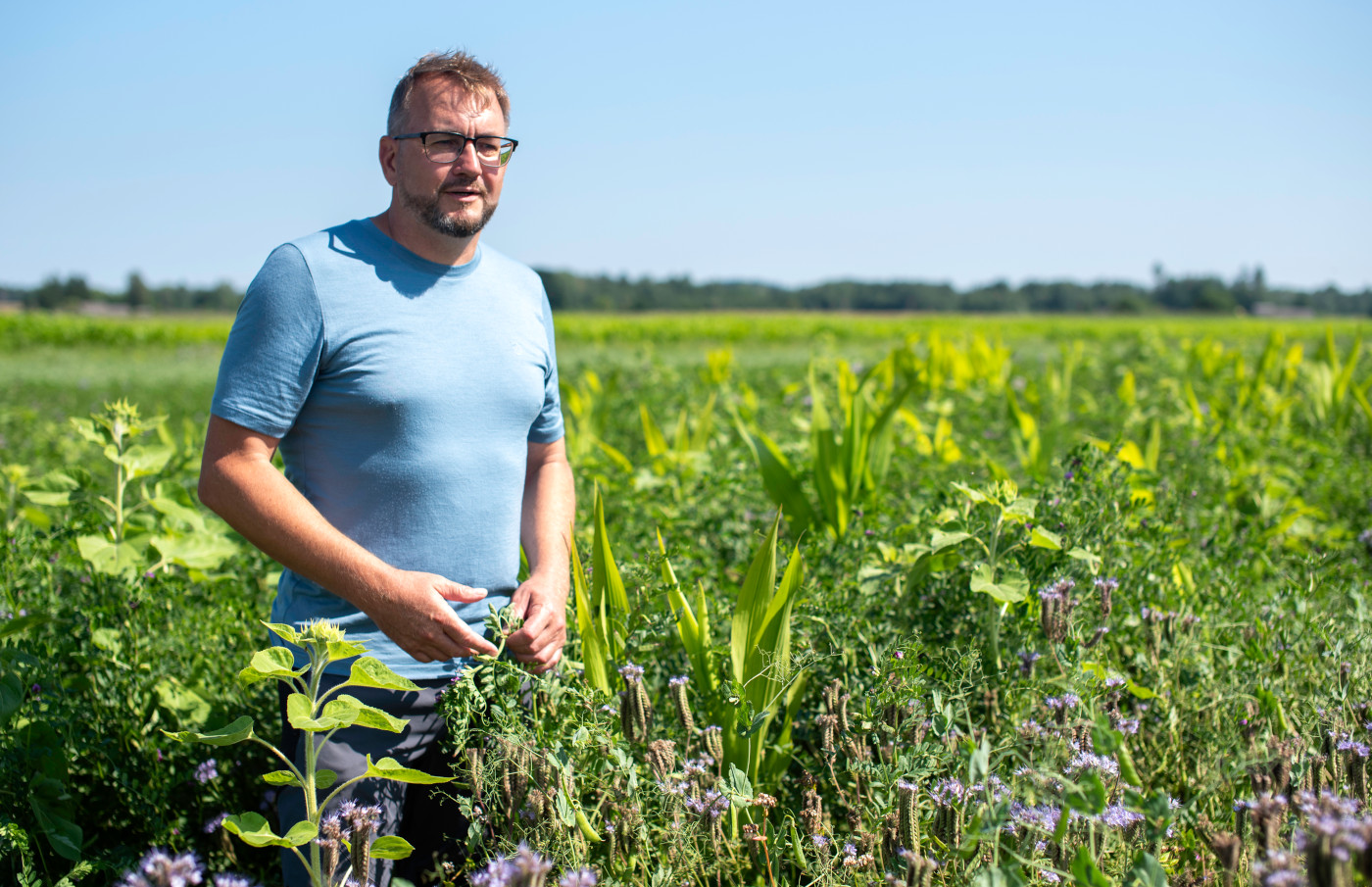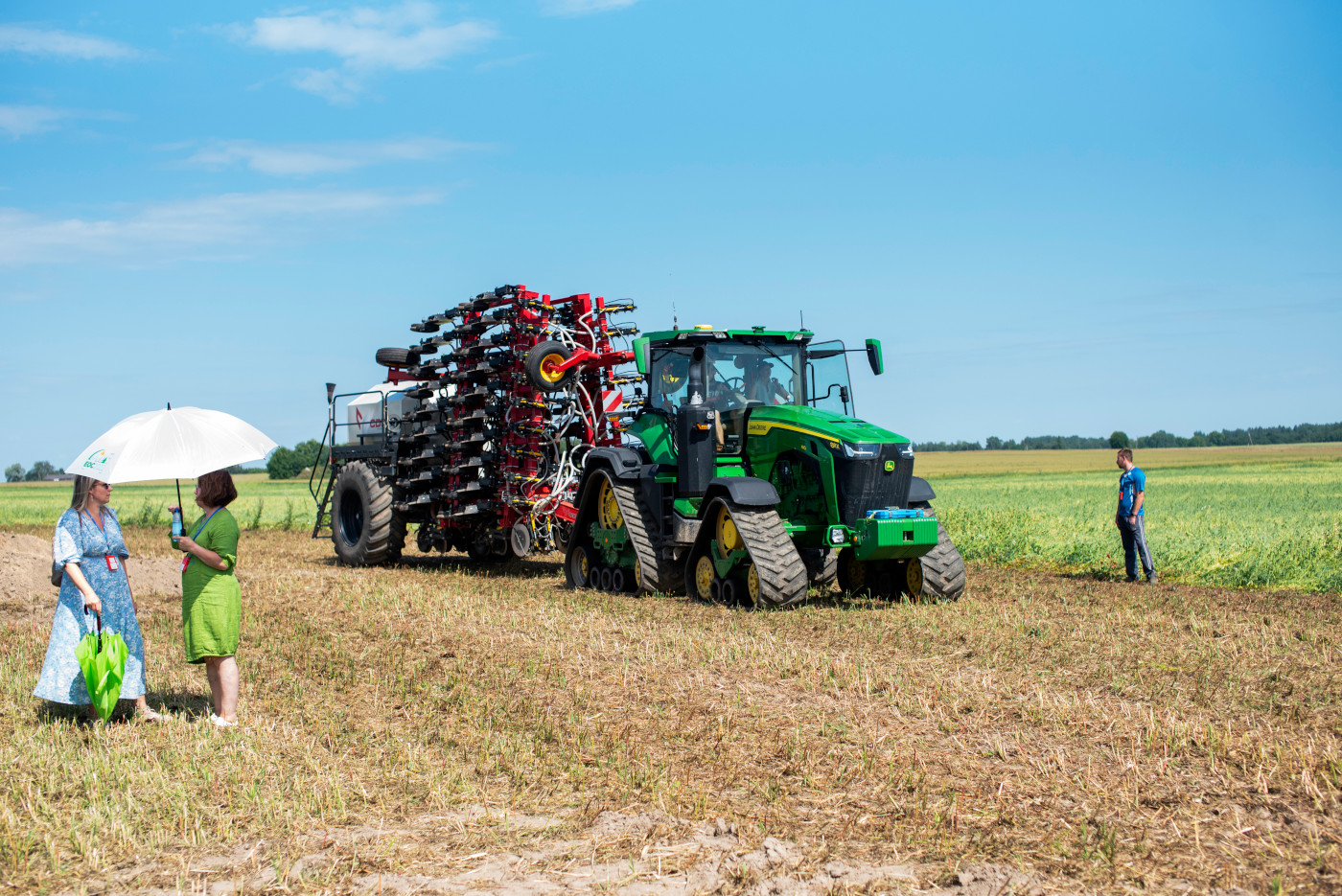August 9, 2024
Kaidi Tingas
Yesterday we introduced agro-environmental developments on the lands of Sadala Agro
One of the largest farmers in Central Estonia, Ahti Kalde (Sadala Agro), is among the seven farmers who are testing the benefits of strips of grassland on agricultural land in cooperation with the LIFE IP ForEst&FarmLand project. Last year, he established 12-metre-wide grassland strips on 58 hectares of field, sowing a mix of native grasses and flowering plants that together cover about eight hectares of the field.
Strips of grassland divide the field and increase landscape diversity, reduce soil erosion, attract field birds and pollinators, and provide habitat for natural enemies of crop pests (hoverflies, ground beetles, spiders or Hymenoptera).
On Sadala Agro’s lands, we have started out by experimenting with a high-diversity and a low-diversity seed mixture, and now researchers from the University of Tartu and the Estonian University of Life Sciences are assessing which mixture and which mowing practices best support vegetation development, pollinators and the natural enemies of insect pests. The project also involves investigating how soil properties change as the strip develops, whether its carbon content starts to increase and what changes occur in the soil biota, such as the ratio of bacteria to fungi.
Although Sadala generally has highly fertile leached soils, Kerttu Tammik, Coordinator of Estonian Soil HUB at the Centre of Estonian Rural Research and Knowledge, pointed out that the roots of grassland plants reach deeper than a metre – therefore, grassland significantly improves soil properties, brings nutrients up from the lower layers and adds structure to the soil.
In the future, it is planned to also test a mix that attracts beneficial insects on the grass strips
While quite a lot of weeds grew on last year’s strips (which is typical for the first year), this year’s flower strips are rich in flowering plants, predominantly chicory, which is highly attractive to hoverflies and bumblebees. According to Ahti Kalde, strips of grassland have already proven their usefulness, as there are fewer pests and therefore less need for plant protection products. He also plans to create new ecological areas.
Ahti has already built a stone wall on the edge of the farmland and planted trees along it. The stone wall and its surrounding ecosystem also helps regulate the microclimate, prevent erosion and provide a habitat for pollinators and natural enemies of pests.
The workshop took place in partnership with the Centre of Estonian Rural Research and Knowledge, which has also sown different green manure crops on Ahti Kalde’s land and organised a demo day on the topic.






